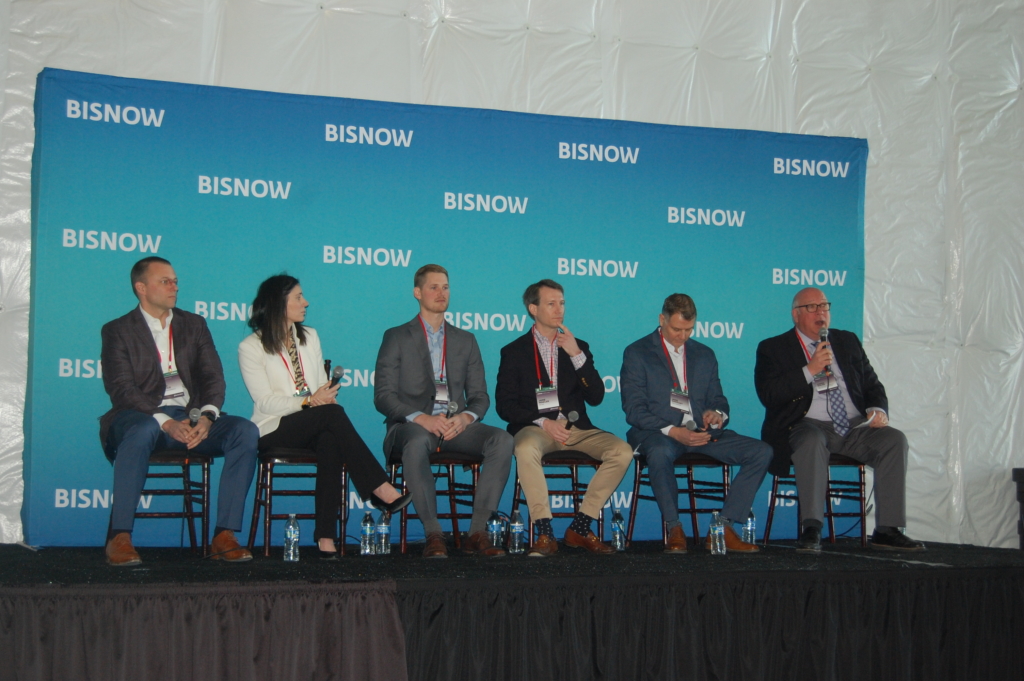Despite slower growth in e-commerce, increasing land shortages and high interest rates, panelists at the recent Bisnow Mid-Atlantic Industrial Summit remain extremely optimistic about the industrial/warehouse asset class in the local sub-market.
“End-user demand continues to be very strong and industrial/warehouse buildings are still the darling of the real estate industry,” stated Mark Matan, Principal, The Matan Companies. “If we all work together, we can continue to help drive job growth and deliver successful projects that improve the lives of the local residents and benefit the community. This can be done while addressing pressing social issues and environmental challenges.”

Drew Enstice, ARCO Design/Build; Danielle Schline, Prologis; Andrew Hassett, Transwestern; Jamie Minkler, Matan Companies; Jamie Sweigart, High Concrete; Owen Rouse, MacKenzie Commercial Real Estate Services.
The Maryland, Virginia, Washington, D.C. and West Virginia markets contain 560 million square feet of industrial/warehouse space and rank as the seventh largest in the country, said JLL’s John Dettleff. “Approximately 4,850 transactions took place between 2020 and 2022 and, despite what you might believe, 70 percent of the leases were under 15,000 square feet of space, which demonstrates its robustness.”
Locally, rents soared more than 50 percent over the past two years, but that pales in comparison to the Los Angeles and Chicago markets which experienced 200 percent growth, Matan said.
For many renewals, rents start at nearly double the existing rate, said Danielle Schline of Prologis. “Requirements in the Baltimore-Washington, D.C. region cannot be serviced out of New Jersey any longer, which is why you have seen dramatic growth for e-commerce fulfillment and last-mile delivery uses.”
Even though land is getting more difficult to come by, Schline doesn’t envision any two-story warehouse buildings coming to the market any time soon. “The price to build this concept, most specifically what is needed in the ceilings to support a second level, makes this cost prohibitive at this point.”
Given the strong demand, rents are typically the last thing that companies ask about when searching for space, explained Mike Trail of MCB Real Estate, which is currently developing nearly two million square feet of warehouse/industrial space in Hagerstown. “Third-party logistics companies gravitate towards the location first and the design elements of the building second. All things considered and given the activity out there, we have a long runway to go locally for this asset class.”
“The spine of I-95, the brain power of the collar counties around Washington, DC and the distributed entitlement protocols of local jurisdictions align to create high demand in a high barrier to entry market,” added Owen Rouse of MacKenzie Commercial Real Estate Services.